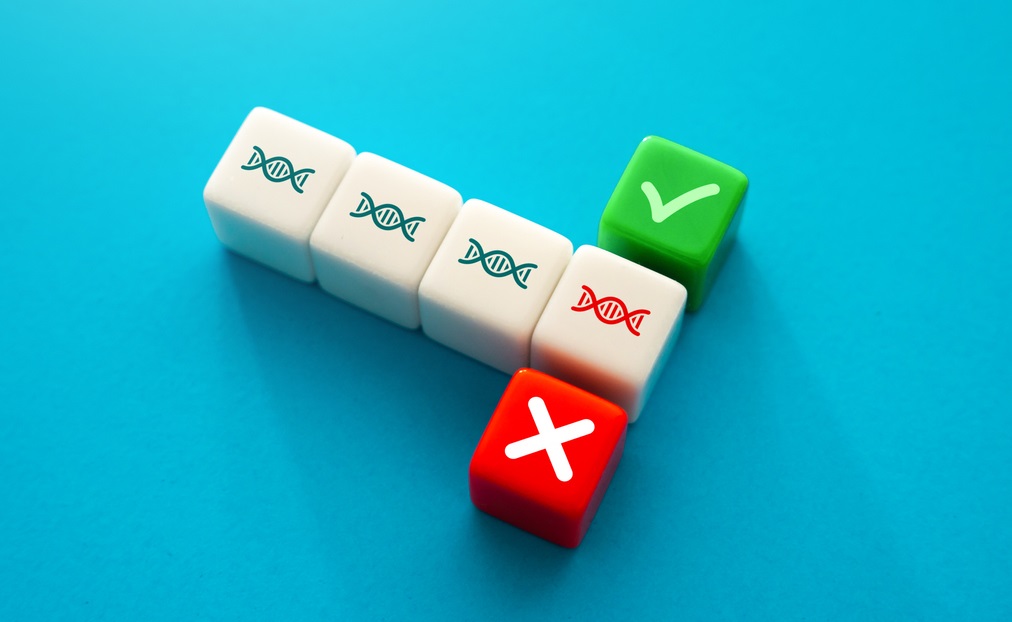Global Trends of Genome Editing Approaches
| |
As the world continues to face challenges such as food security, climate change, and fatal diseases, scientists have turned to technological advancement to find ways to curb or eliminate them. One of these is genome editing, which has gained popularity over the last few years because of its precision and low cost. In a paper written by Masashi Tachikawa and Makiko Matsuo of the University of Tokyo in Japan, they examined how genome editing is regulated by different countries, and how these relate to the regulations of genetically modified organisms (GMOs). They also highlighted that these regulations are trending towards a “middle ground,” wherein some countries consider genome editing products as GMOs but try to apply simplified regulations while some exclude them from the scope of regulations as non-GMOs but require confirmation.

Categories of regulatory approaches
The paper describes two general positions in which countries regulate genome editing and its products, and these positions are further split into two approaches per position:
- Position 1 – Subjecting genome edited organisms to GM regulations.
- Approach 1 – Applying GMO regulations as they are. Prior safety assessment and approval by the government is required.
- Approach 2 – Simplified safety review and approval procedures will be applied.
- Position 2 – Excludes genome-edited organisms from the scope of GMO regulations.
- Approach 3 – Requires proper confirmation from regulators before placing the product on the market.
- Approach 4 – The government does not require proper confirmation.
Based on the categories above, approaches 1 to 4 serve as the sequence from the most to the least stringent regulations for genome editing.
Country regulations on genome editing
Some countries in North America, South America, Asia, Oceania, and the European Union already have regulatory considerations in place for genome editing. We examine these regulations based on the approaches described above.
The United States. Different government agencies in the US are assigned to oversee genome editing, depending on its use for crops, animals, or food. This is also true for which approach is taken to regulate them. Different policies are applied to different subject areas due to each institutional jurisdiction. In summary, the US uses Approach 4 to regulate crops through the USDA and Environmental Protection Agency, Approach 3 for food through the Food and Drug Administration (FDA), and Approach 1 for animals also through the FDA, though this is currently under review.
The European Union. The EU’s current position falls under Approach 1, as organisms derived from genome editing technologies without a long history of safe use were considered as GMOs and subject to the regulation under the EU’s Environmental Release Directive. This stemmed from the ruling of the Court of Justice of the European Union in July 2018, and it had a significant impact on European stakeholders because it affected the position of genome-editing in Europe. However, it should be noted that the European Commission is currently developing a roadmap to consider a legal framework for targeted mutagenesis and cisgenesis in plants after gathering information about new genomic techniques from different EU institutions in 2021.
Argentina and other South American countries. Argentina, Brazil, Chile, Paraguay, and Colombia are clarifying their regulatory positions and starting commercialization from the standpoint of promoting genome editing technology. They represent Approach 3, though there are minor differences within the region.
Australia (environment). The Office of the Gene Technology Regulator (OGTR) regulates GMOs under the Gene Technology Act of 2000 and the Gene Technology Regulations of 2001. In 2019, Australia revised its regulations through the Gene Technology Amendment Regulations 2019, wherein genome editing technologies that are considered SDN-1 are exempted from current regulation, while genome editing that uses SDN-2 is subject to regulation. In this case, the OGTR follows Approach 4 for SDN-1.
New Zealand (environment). In 2014, the New Zealand High Court ruled that genome editing technologies were considered novel and not scientifically well-established and that it is inappropriate to exclude genome editing techniques from the Hazardous Substances and New Organisms Act. This prompted the New Zealand Environmental Protection Agency (NZEPA) to treat mutagenesis technologies that were recently developed as GMOs. NZEPA follows Approach 1.
Australia and New Zealand (food). The two countries jointly established the Food Standards Agency of Australia and New Zealand (FSANZ) to regulate foods. In 2021, FSANZ proposed to expand the process-based definition to capture all methods of genetic modification including genome editing. But it also proposed to revise the definition of the term “food produced using gene technology” to exempt products based on product-based criteria. This includes food with foreign genes that were removed from, food with characteristics that can be produced by conventional breeding, and food that does not contain foreign genes or new proteins. FSANZ’s proposals fall under Approach 2.
Japan. Regulations in Japan fall under the Ministry of Environment and the Ministry of Health, Labor and Welfare. Both their policies agree that genome-edited organisms are exempted from the regulation of GMOs, but confirmation from each administrative body is required and labeling is encouraged by the government. Japan’s regulations for genome editing can be considered as Approach 3.
China. The country adopted the Guidelines for Safety Evaluation of Gene-edited Plants for Agricultural Use in January 2022. The guidelines promote a simplified procedure such that if the risk is found to be low, a small-scale intermediate test would be conducted and the results are submitted to apply for a safety certificate for commercial production. The new guidelines is part of the country's efforts to promote the use of life sciences while maintaining the legal regime for GMOs. This is an example of Approach 2.
India. The Ministry of Environment, Forest, and Climate Change released a memorandum in March 2022 stating that plants produced under SDN-1 and SDN-2 that do not contain foreign genes are not subject to GM regulations. This implies that some articles in the country's existing GM regulations are exempted for those plants. The memorandum was followed by the release of the Guidelines on Risk Assessment of Genome-edited Plants by the Department of Biotechnology under the Ministry of Science and Technology. India’s regulatory approach is Approach 2.
The Philippines. In June 2019, the Philippine government initiated the development of a government policy and guidelines on plant breeding innovations (PBI). Then in May 2022, the Philippine Department of Agriculture published the rules and procedures for marketing PBI products. It states that products that do not contain new combinations of genetic material were exempted from the regulations. Once declared exempted from GM regulations, a certificate is issued by the government to the developer and the public is informed by posting relevant information about the product on the government agency's website. Their rules can be classified under Approach 3.

The “Middle Ground”
Of the countries and institutions mentioned above, the majority of these were found to apply approaches 2 and 3, which can be considered as the “middle ground” for regulating genome editing. The authors of the paper identified three important points as to why most countries tend to move towards this middle ground:
- Countries are not only engaged in research and development but also regulatory competition since expectations for the potential of genome editing technologies are high. The policies of these countries encourage industrial competitiveness while maximizing the use of genome editing technologies.
- Countries have tried adopting regulations through administrative procedures rather than legal revisions due to extreme regulatory competition and to avoid exploring too many options to reach compromise for all possible transcending political positions.
- Administrative bodies are in charge of regulating GMOs and determining regulations for the handling of genome-edited organisms in each country. These bodies conduct consultative processes with the proper experts and stakeholders and continue to exchange information with international agreement and organizations such as the Cartagena Protocol on Biosafety, the Codex Alimentarius Commission, and the Organization for Economic Co-operation and Development to name a few. The institutional similarities and transnational communication may have encouraged countries to move towards the middle ground when it comes to genome-edited organisms.
The article described that approaching the middle ground is the trend at the moment. However, it should also be considered that many countries have not yet completed their policy-making processes. New patterns and trends may emerge in the future as global dynamics change. Thus, it is vital to keep track of the advances of genome editing policies around the world.
The article Divergence and Convergence in International Regulatory Policies Regarding Genome-edited Food: How to Find a Middle Ground was published in Frontiers in Plant Science. Read the article to learn more about how genome-editing regulations and approaches affect intra- and international policies globally.
| Newer Post | Archive | Older Post |
Science Speaks is ISAAA Inc.'s official blog. Weekly blog articles, authored by ISAAA writers, partners, and invited contributors, aim to help share, disseminate, and promote scientific knowledge and its vital role in achieving global agricultural sustainability and development. Your support to Science Speaks will help us achieve this goal. You can help us by donating as little as $10.

